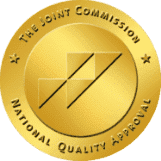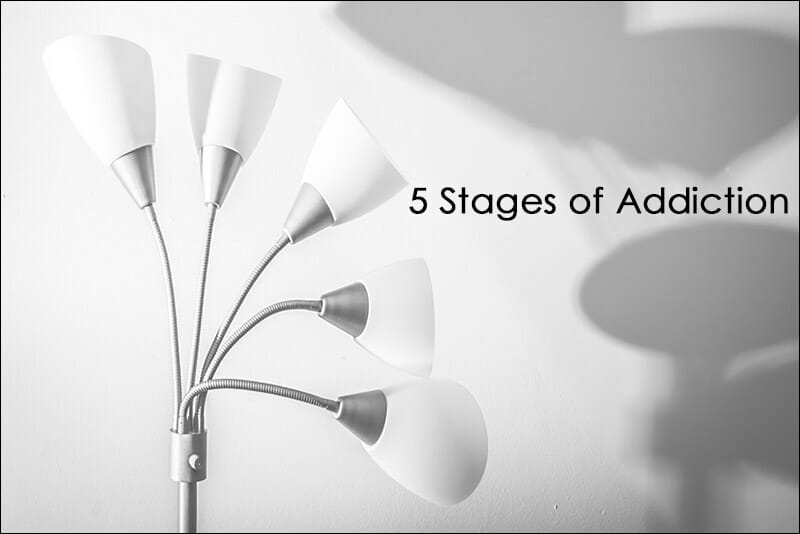What Are the 5 Stages of Addiction for Drugs and Alcohol?
What Are the 5 Stages of Addiction for Drugs and Alcohol?
Understanding the 5 stages of addiction for drugs or alcohol can be helpful for avoiding a substance use disorder that can cause many other health complications.
 Addiction is a complex, progressive disease of the brain. It is defined by the National Institute on Drug Abuse (NIDA) as “a chronic, relapsing disorder characterized by compulsive drug seeking and use despite adverse consequences.”
While the root cause of the disease is partly rooted in genetics, family history and early environment, drug or alcohol use is often voluntary in the first phases of addiction.
But as the disease fully progresses, there are 5 stages of addiction that most people will experience.
Addiction is a complex, progressive disease of the brain. It is defined by the National Institute on Drug Abuse (NIDA) as “a chronic, relapsing disorder characterized by compulsive drug seeking and use despite adverse consequences.”
While the root cause of the disease is partly rooted in genetics, family history and early environment, drug or alcohol use is often voluntary in the first phases of addiction.
But as the disease fully progresses, there are 5 stages of addiction that most people will experience.


 Addiction is a complex, progressive disease of the brain. It is defined by the National Institute on Drug Abuse (NIDA) as “a chronic, relapsing disorder characterized by compulsive drug seeking and use despite adverse consequences.”
While the root cause of the disease is partly rooted in genetics, family history and early environment, drug or alcohol use is often voluntary in the first phases of addiction.
But as the disease fully progresses, there are 5 stages of addiction that most people will experience.
Addiction is a complex, progressive disease of the brain. It is defined by the National Institute on Drug Abuse (NIDA) as “a chronic, relapsing disorder characterized by compulsive drug seeking and use despite adverse consequences.”
While the root cause of the disease is partly rooted in genetics, family history and early environment, drug or alcohol use is often voluntary in the first phases of addiction.
But as the disease fully progresses, there are 5 stages of addiction that most people will experience.
Progression of the Phases of Addiction
As these distinct phases of addiction advance, the disease takes hold by changing the chemical makeup of the brain, altering neural pathways associated with pleasure, stress, and self-control. These structural and functional changes of the brain can make it nearly impossible for some people to stop drinking or using drugs unless they seek outside help for treatment. There are many stereotypes surrounding substance use disorders and the disease of addiction. It is often thought of in the starkest terms, depicting people who struggle with this disorder will lose everything, including their jobs, families, homes, and are likely bound for prison or death. In the most severe cases, this can be true, but it is not necessarily the norm for everyone with a substance dependence. People struggling with addiction come from all walks of life, socio-economic status, race, and gender. The National Survey on Drug Abuse and Health (NSDH) estimates that around 20 million struggle with substance use disorders in the United States, and that number is likely underreported. A vast number of individuals struggling with addiction usually lead what looks like a healthy, productive life. No matter where they are in the progression of the disease, many of them arrived there gradually over time.
What Are the 5 Stages of Addiction?
Stage 1 – First Use or Experimentation
It’s important to make the distinction between “first use” and “experimentation” when considering the stages of addiction. Many people only consider the first stage as “experimentation,” when people try drugs or alcohol as teens or young adults to go along with their peers. This is certainly true for many people, but not always. An often-overlooked element of this stage is potentially habit-forming medications prescribed by a physician, such as opioid painkillers to treat a medical condition. Anyone can develop a dependence to these medications if they are misused or taken for longer than the recommended period of time necessary for treating a specific condition. In this case, the user wasn’t experimenting with drugs and was simply following their doctor’s orders. On the other hand, it’s quite common for some people to experiment with drinking or doing drugs in their teen years or early adulthood as a first use experience. In this case, they are not following orders from a medical professional and they are in control of their actions. Whether first use is because of experimentation or as the result of a medical condition, this is one of the most impactful moments in the stages of addiction. With first use, a person discovers how a given substance makes them feel and whether or not they want to experience it again.Stage 2 – Continued or Regular Use
In the second stage, a person has overcome any initial hesitation they might have had with first use and the consumption progresses as continued or regular use of drugs or alcohol. A user may find that alcohol or drugs make them feel more comfortable in social settings or, perhaps, they enjoy the “high” and want to experience it more frequently. Some people enjoy it so much they want to do it as often as they can. With prescription medications, an individual may feel like they actually need more of the drug to treat their condition and believe they will suffer without it. As a result, they seek out more of the medication by any means possible.Stage 3 – Tolerance
When a person develops a tolerance to alcohol, drugs, or medications, it means they must take more of the substance to feel its effects. While it varies from person to person, a tolerance usually develops over time. When this occurs, an individual must use a greater amount of a given substance to get “high” than they did when they first started using it. In the case of prescription opioids prescribed by a doctor, a person may need to take a higher dose in order to ease their pain, even if it is not recommended or authorized by their physician. Developing a tolerance to drugs, alcohol, and medications is a giant red flag that a dependence is starting to take hold.Stage 4 – Dependence
There is both a psychological and physical aspect related to dependence. A physical dependence to drugs, alcohol or medications means a person will get physically ill or develop potentially severe withdrawal symptoms if they are unable to drink or use drugs. Additionally, because of functional changes in the brain due to the substance misuse, many individuals aren’t able to function well without it. They may start to experience mood swings or become overly anxious, stressed, or depressed. A psychological dependence can be just as strong. Even without withdrawal symptoms, a person who regularly uses drugs, alcohol, or misuses medications starts to feel functionally normal only when they’re using. Many admit that they don’t feel happy or normal unless they are using their substance of choice. Without an intervention or a willingness to seek treatment, a person with a dependence to drugs or alcohol will usually lose the battle against addiction over time.Stage 5 – Addiction
In this last stage of addiction, the “shine” or initial good feelings brought on by substance use has worn off. At this point, a person is practically unable to stop using despite the fact they no longer enjoy it, or their self-destructive behaviors are unraveling their life. Depending on the severity of the disease, some people are in total denial that they have a problem with addiction, despite the chaos and troubles that follow them. In other cases, a person may be able to abstain from using drugs or alcohol for a period of time, but much to the dismay of their loved ones, continually fall back into substance use. When addiction occurs, the changes in the brain have become so dramatic that executive functioning and reasoning have disappeared to the point that it is almost impossible for a person to behave in a rational manner and do what they know is right to stop using.




